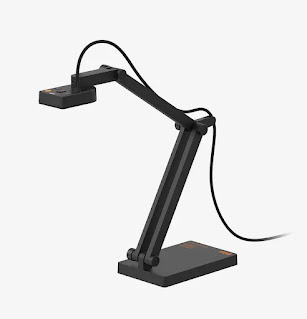Blog Post #1: Comparing & Contrasting the AASL & ISTE Standards
The AASL standards and the ISTE standards were created as a guideline or a framework that is available to school librarians to best support the learning needs of students. These standards, while differing from each other, can be used in tandem to create a learning environment that support the whole learner.
At a surface level, AASL standards and ISTE standards are very different from one another. The American Association of School Librarians (AASL) created their standards to act as a structured framework, rather than a loose guideline, for school librarians to follow to approach teaching. They do not outline concepts that should be taught, but rather offer a guide of how to teach. As stated by Alice Robinson and Jennifer Freedman in their article in Knowledge Quests, Journeying With the AASL Standards, these standards are, "Designed to empower school librarians to transform teaching and learning..." (2019, pp.14). They have an overarching goal of supporting students in learning, exploring, and collaborating.
 |
| This wheel shows the different domains that make up the ISTE standards for students. Image retrieved from EdTech Connect NC. |
The ISTE standards, however, have a strong focus on technology use in supporting learners. These standards, created by the International Society for Technology in Education (ISTE), are described on their website as, "...a framework that guides educators, leaders and coaches in using technology to create high-impact, sustainable, scalable and equitable learning experiences." (Standards, n.d.). Despite this strong focus on technology, the ISTE standards put a heavy emphasis on teaching learners to use technology to support their learning, not as a substitute for learning practices.
In the Knowledge Quest article by Alice Robinson and Jennifer Freedman, they discuss how a librarian can best interact with each of the six shared foundations (standards) in the AASL standards. The foundations (inquire, include, collaborate, curate, explore, and engage) are looked at through the lens of AASL's domains and competencies (think, create, share, and grow) (2019). This perspective of analyzing and decoding the standards allows for a collaboration between AASL and ISTE standards. As ISTE standards for learners are organized into seven domains (empowered learner, digital citizen, knowledge constructor, innovative designer, computational thinker, creative communicator, and global collaborator), these domains can be matched with the shared foundations that are the most similar to them (ISTE Standards: For Students, n.d.). This would allow for an element of technology to be implemented into the teaching strategies for each of the six shared foundations. This would serve to further support learners and expand their learning horizons. While the standards themselves are very different in their content, when used in conjunction with one another, they lend themselves to a library that best supports the needs of 21st century learners.
References
American Association of School Librarians. (n.d.). Purpose & Structure. Standards Structure. https://aasl.ala.org/standards/overview/
International Society for Technology in Education. (n.d.). ISTE Standards: For Students. ISTE. https://iste.org/standards/students#1-1-empowered-learner
International Society for Technology in Education. (n.d.). Standards. ISTE. https://iste.org/standards
Robinson, A., & Freedman, J. (2019). School Librarians Level Up!: Transform Your Teaching by Unpacking the AASL Standards Framework and Implementing Shared Foundation V: Explore. In Knowledge Quest: Journeying with the AASL standards (5th ed., Vol. 47, pp. 12–17). essay, American Association of School Librarians.
The University of North Carolina at Chapel Hill. (n.d.). About this site. EdTech Connect NC. https://iste.web.unc.edu/about/



Hannah
ReplyDeleteThank you for helping me to understand both standards a little bit better. The use of these technologies does help the learner to comprehend the material and the teachers the ability to share their knowledge base for understanding and clarity. Thanks for your post.